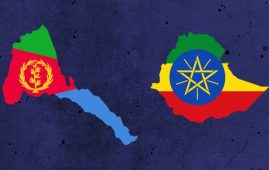A Joint Government and Humanitarian Partners’ Document “Humanitarian Requirements Mid-Year Review 2015” has revised its previous projection of the number of relief food beneficiaries (3.3 million) to increase to 4.5 million.
According to the document, the number of nutrition hotspot “priority 1 woredas” doubled from 49 to 97 in the last four months. The revised total funding requirement for 2015 now stands at USD 312 million. Of which, USD 157 million is expected from donnors.
The earlier document published in January had identified 2.9 million relief food beneficiaries and USD 281 million for multi-sector humanitarian response.
“Differing from the forecast at the beginning of the year, the onset of the belg/gu/ganna/sugum rains was delayed and ceased earlier than normal. The rains were erratic and inadequate in amount negatively affecting water and pasture availability and reducing belg harvest. Unseasonal livestock migration and livestock deaths were reported in pastoral areas. Consequently, food insecurity deepened and malnutrition rose in affected areas”, the document elaborated.
According National Metrology Agency, an early retreat of the kiremt rains, unseasonal rains leading to flooding in the last quarter and dry spells are expected as the El Niño phenomenon strengthens.
The government spokesperson, Minister Redwan Hussein has told the press last week that aid is being distributed from emergency stock and that the government has allocated 700 million Birr to address the issue.
A technical committee comprising Ministry of Agriculture, Agricultural Transformation Agency, National Meteorology Agency and Ethiopian Agricultural Research Institute, has been formed to deal with the issue
OCHA attributed the disturbance of weather to the on-going El Niño, which is a band of warm ocean wind that develops from the central and east central Equatorial Pacific. It is a recurrent weather problem that usually occurs at intervals of two to seven years, usually lasting from 12 months up to 18 months. The last time Ethiopia suffered from El Niño was in 2005/06.
According to OCHA, the on-going El Niño phenomenon will most likely continue to negatively affect rainfall patterns until April 2016 (80 per cent probability). This may further impact harvest in some areas, and cause unseasonal heavy rains in October-December 2015 with Crop damage and flooding being high risk during this period, said OCHA’s update.
***********






